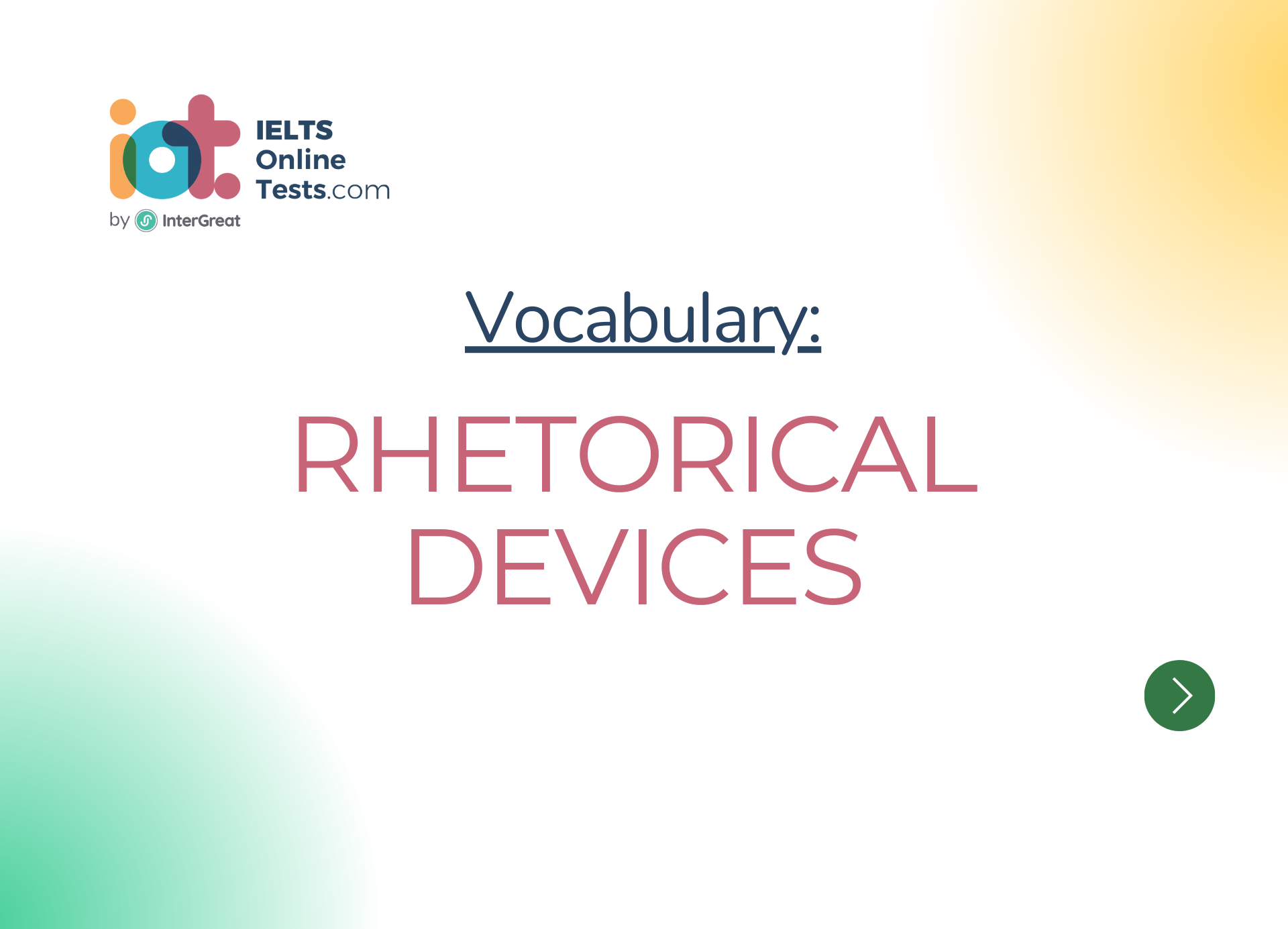
Rhetorical devices
Rhetorical devices are techniques and language elements used to enhance communication and persuade the audience. Here are some common rhetorical devices you might encounter in IELTS tasks, suitable for band scores 6.5-8.0:
Alliteration:
The repetition of initial consonant sounds in nearby words, e.g., "Peter Piper picked a peck of pickled peppers."
Anaphora:
The repetition of a word or phrase at the beginning of successive clauses or sentences, e.g., "I have a dream... I have a dream..."
Antithesis:
Juxtaposing contrasting ideas in parallel structures, e.g., "To be or not to be."
Hyperbole:
An exaggeration for emphasis or dramatic effect, e.g., "I've told you a million times."
Metaphor:
A direct comparison between two unrelated things without using "like" or "as," e.g., "Her smile is a ray of sunshine."
Simile:
A comparison using "like" or "as," e.g., "He runs like the wind."
Personification:
Giving human qualities to non-human entities, e.g., "The flowers danced in the breeze."
Repetition:
Repeating words, phrases, or ideas for emphasis and memorability.
Parallelism:
Using similar grammatical structures in phrases or sentences to create balance and rhythm.
Rhetorical Question:
A question asked not to elicit an answer but to make a point or engage the audience, e.g., "Isn't it time for a change?"
Irony:
Expressing the opposite of the literal meaning, often to convey humor or sarcasm.
Climax:
Building up to a point of maximum intensity or importance in a series of words or ideas.
Oxymoron:
Combining contradictory terms, e.g., "jumbo shrimp" or "bittersweet."
Understatement:
Downplaying the significance or impact of something, e.g., "It's just a scratch" (when referring to a large wound).
Euphemism:
Substituting a mild or indirect word or phrase for a more direct or harsh one, e.g., "passed away" instead of "died."
Imagery:
Using vivid and descriptive language to create mental images.
Allusion:
Making a brief reference to a well-known person, place, event, or work of literature.
Inclusive Language:
Using pronouns and language that involve the audience, creating a sense of unity, e.g., "we," "us."
Anecdote:
A short personal story used to illustrate a point or make an argument.
Emotive Language:
Words that evoke strong emotions or feelings in the reader or listener.
Rhetorical Contrast:
Presenting two contrasting ideas or examples to highlight a point.
Chiasmus:
Reversing the order of words or phrases in parallel structures, e.g., "Ask not what your country can do for you; ask what you can do for your country."
Assonance:
The repetition of vowel sounds within nearby words, e.g., "The rain in Spain stays mainly in the plain."
Polysyndeton:
Using multiple conjunctions in quick succession, e.g., "He ran and jumped and laughed."
Tricolon:
A series of three parallel words, phrases, or clauses, e.g., "Veni, vidi, vici" (I came, I saw, I conquered).
Anastrophe:
Inverting the normal word order in a sentence for emphasis or poetic effect, e.g., "Powerful you have become, the dark side I sense in you."
Epistrophe:
The repetition of a word or phrase at the end of successive clauses or sentences, e.g., "See no evil, hear no evil, speak no evil."
Onomatopoeia:
The use of words that imitate the sound they represent, e.g., "buzz," "hiss," "clang."
Litotes:
An understatement in which an affirmative is expressed by negating its opposite, e.g., "She's not a bad singer."
Juxtaposition:
Placing two contrasting ideas or elements side by side to highlight their differences or create an effect, e.g., "It was the best of times, it was the worst of times."
Remember to use these rhetorical devices judiciously to add depth and persuasion to your writing and speaking responses in the IELTS exam. Practice incorporating them in your essays and speeches to improve your language and communication skills. Good luck!




